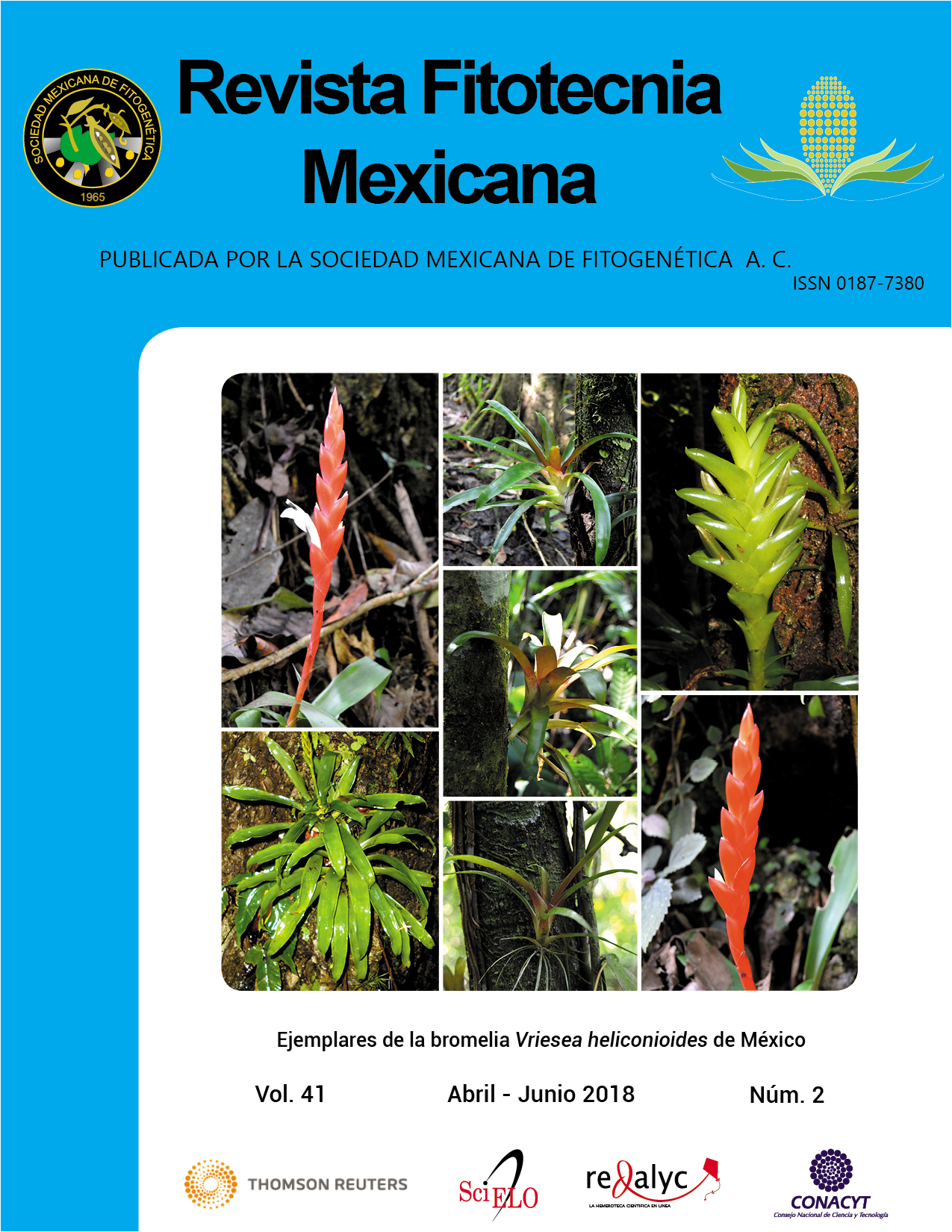GROWTH AND PRODUCTION OF AUTUMN-WINTER CANOLA (Brassica napus L.) FORAGE IN ZACATECAS, MEXICO
Main Article Content
Abstract
Canola (Brassica napus L.) might represent an alternative as a forage crop for Autumn-Winter cycle; however, the harvest time to achieve maximum yields of dry matter. The objective of this study was to determine in two canola varieties the accumulation of dry matter is unknown and its morphological components during 10 cut dates, and thus, be able to identify the optimum harvest time for the Autumn-Winter cycle in Zacatecas, Mexico. The Varieties Canorte 2010 and Hyola 401 were evaluated under a completely randomized experimental design with three replications. Plants were manually harvested at 9, 16, 23, 30, 42, 49, 56, 63, 70 and 77 days after planting. Traits measured were dry forage yield, dry matter yield of green leaf, stem, flower/button, siliqua, and dead leaf. The dynamics of growth in dry forage production in the two varieties of canola showed a constant and significant (P ≤ 0.05) increase and statistically significative from day 23 to day 63, where Hyola 401 showed higher production (P ≤ 0.05). The maximum value of growth rate was observed at day 63 after planting, with an average of 69.2 and 59.3 kg Ms ha-1 d-1, respectively for Hyola 401 and Canorte 2010. It is concluded that the optimal harvest time to increase dry forage yield is day 63 after planting, and that Hyola 401 variety shows higher yields of dry matter.

